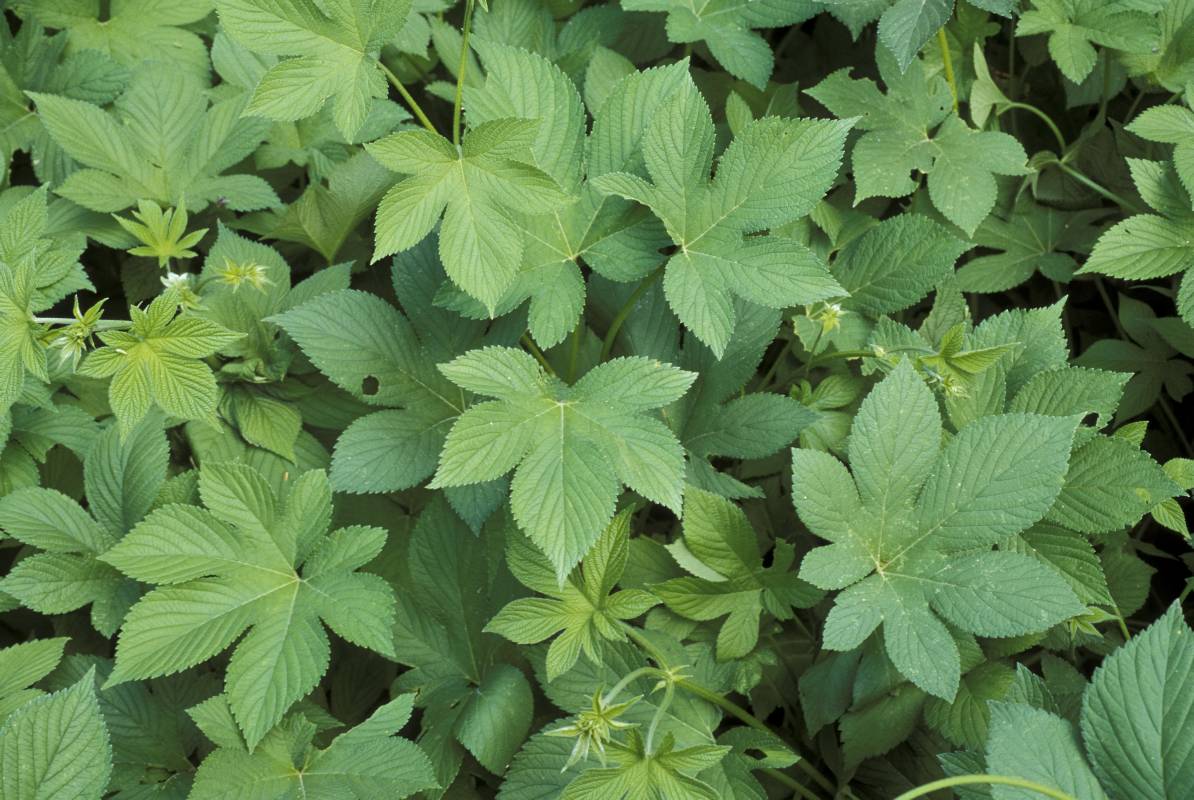Japanese hop (Humulus japonicus) is an herbaceous, usually annual vine. Native to eastern Asia, it was originally imported to the United States in the late 1800s for use in Asian medicine and as an ornamental vine. Within Missouri, Japanese hop is found most commonly in the Missouri and Mississippi river corridors, but it is increasing its range within certain stream and river foodplains.
Japanese hop outcompetes established vegetation in areas with exposed moist soil. It invades bottomland prairies, stream banks, ditches, roadsides, railroads, pastures, and moist, open, disturbed areas. It prefers direct sunlight and does not tolerate heavy shade. However, it can invade bottomland forest when natural openings allow sufficient light.
Effect on Natural Communities
Japanese hop produces large quantities of seed every year, leading to many thousands of hop plants per acre. Following germination in early spring, Japanese hop grows rapidly and can eventually form a blanket of vegetation four feet thick, smothering existing native vegetation. Climbing vines can break and pull down small trees and shrubs with the potential to displace native stream bank and foodplain vegetation.

Characteristics of Japanese Hop
- Sprawling, twining, climbing vines
- Opposite, palmately divided leaves, typically with 5 to 7 lobes, rough to touch
- Inconspicuous green flowers, with male and female flowers on separate plants
- Female flowers borne on a drooping cone-like structure with overlapping scales (called hops)
- Short, sharp downward pointing prickles on stem
Seeds
Japanese hop seeds are dispersed by wind, water, machinery, and animals.
- Round seeds are mottled light and dark brown, 1/8 inch in diameter, and mature in September.
- Seeds begin to germinate in early spring and continue throughout the growing season if ample moisture and sunlight are available.
- The first frost kills the vines, which quickly wither away, leaving behind an abundance of seed for the following year.
Title
Manual Removal
In areas with light infestation, manual removal can work well within moist soil in early spring when the root system is small. The entire root and plant must be removed and taken of-site to prevent regrowth. Repeated pulling/ digging should continue until dieback in fall when new plants cease to emerge.
Title
Herbicide Treatment
In areas with heavier infestations or in newly established tree plantings, a pre-emergent herbicide containing sulfometuron methyl (Oust® XP) applied in mid-March generally causes minimal or no damage to other perennial vegetation eliminating the need to rescue desirable vegetation from an established hop infestation. Application of a pre-emergent herbicide followed by a foliar application of glyphosate or metsulfuron applied prior to seed production (mid-April to August) may provide the most effective control. Subsequent applications will be necessary to control germinating plants throughout the season to prevent seed production.
Title
Mowing or Cutting
Mowing/cutting is also effective when started in early spring and continued until dieback in fall. The location of plants within wet soils and amongst trees may hinder mowing control efforts.
Reports indicate that after three consecutive years of control efforts that prevent seed production, the seed bank is normally exhausted. In areas with the potential for recolonization, such as stream banks, continued monitoring will be needed until the upstream seed source is eliminated.





















